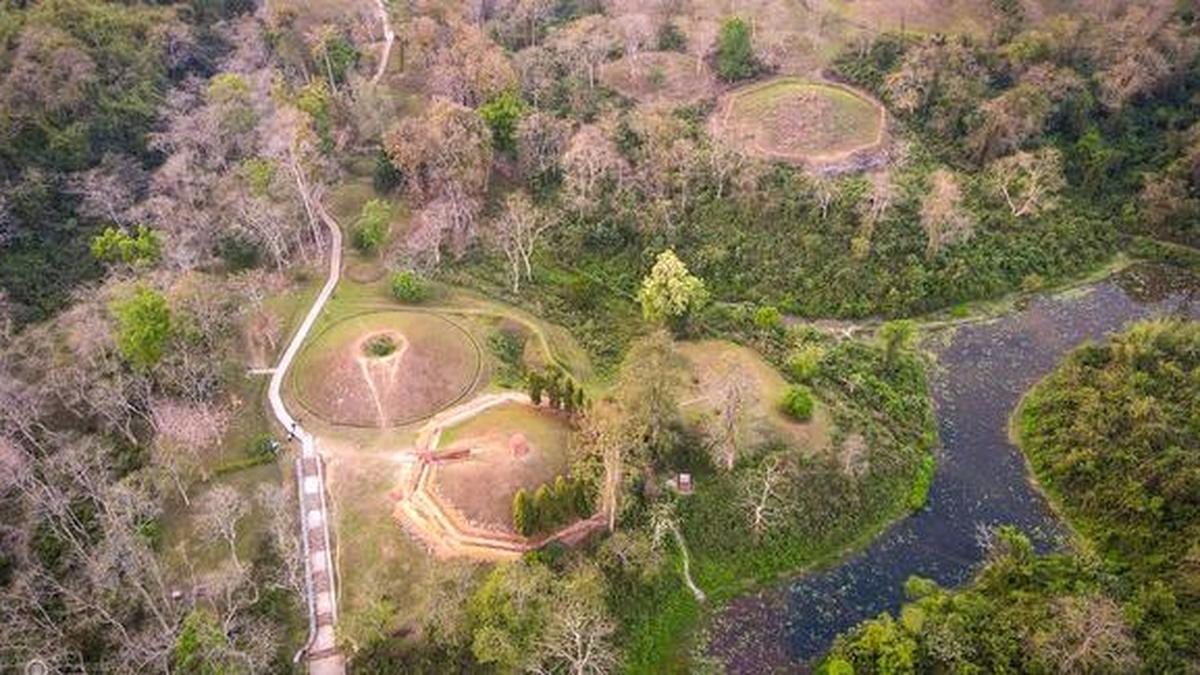- Courses
- GS Full Course 1 Year
- GS Full Course 2 Year
- GS Full Course 3 Year
- GS Full Course Till Selection
- Essay Target – 150+ Marks
- Online Program
- GS Recorded Course
- NCERT (Recorded 500+ Hours)
- Polity Recorded Course
- Geography Recorded Course
- Economy Recorded Course
- AMAC Recorded Course
- Modern India, Post Independence & World History
- Environment Recoded Course
- Governance Recoded Course
- Science & Tech. Recoded Course
- International Relations and Internal Security Recorded Course
- Disaster Management Module Course
- Ethics Recoded Course
- Current Affairs Recoded Course
- CSAT
- 5 LAYERED ARJUNA Mentorship
- Public Administration Optional
- ABOUT US
- OUR TOPPERS
- TEST SERIES
- FREE STUDY MATERIAL
- VIDEOS
- CONTACT US
Ahom 'Moidam' Recommended for UNESCO World Heritage List
Ahom 'Moidam' Recommended for UNESCO World Heritage List
06-07-2024

News
- Ahom Moidams: The resting places of Ahom royal families in Assam's Charaideo district.
- UNESCO World Heritage List: Recommended for inclusion by the International Council on Monuments and Sites (ICOMOS).
- World Heritage Committee Session: To be held in New Delhi, July 21-31.
Background
- Only Indian Applicant: Among 36 global nominations, including 19 new ones.
- Tentative List: First included in April 2014.
- ICOMOS: An international advisory body for cultural heritage conservation.
ICOMOS Recommendation
- Criteria for Inclusion:
- Criterion (iii): Exceptional testimony to a cultural tradition or civilization.
- Criterion (iv): Outstanding example of a significant stage in human history.
- Cultural Significance: Demonstrates 600 years of Tai-Ahom traditions at Charaideo.
History and Key Facts About Moidams
- Dynasty: Ahom dynasty (13th-19th century).
- Comparisons: Likened to royal tombs of ancient China and Egyptian pyramids.
- Ahom Rule: Lasted until British annexation in 1826.
- Charaideo: First capital founded in 1253.
- Cultural Shift: Adoption of Hindu cremation methods in the 18th century.
- Geographical Spread: Moidams found across regions where Tai-Ahom culture prevailed, including Northern Vietnam, Laos, Thailand, Northern Burma, Southern China, and Northeast India.
- 90 Moidams: Located within Charaideo necropolis on elevated land.
- Construction: Earth mounds over hollow vaults of brick, stone, or earth, topped by a shrine.
- Tai-Ahoms Migration: Migrated to Assam in the 13th century, Charaideo was the first capital.
- Sacred Geography: Integration with natural features creating sacred topography.
Maintenance and Management
- Condition: Well-maintained, minimal adverse effects.
- Management: Jointly by Archaeological Survey of India (ASI) and Assam Government's Directorate of Archaeology (DoA).
- Protection: Legal protection deemed adequate, with suggestions for sustainable tourism and interpretation plan.
- Property and Buffer Zone:
- Area: 95.02 hectares.
- Buffer Zone: 754.511 hectares.
- Inhabitants: No inhabitants within the property; approximately 4,017 in the buffer zone.
Significance
- Exceptional Example: Represents Tai-Ahom funerary traditions and cosmologies.
- High Concentration: High density of Moidams in the area, with clearly marked archaeological sites.
- Integrity and Authenticity: Conditions met according to ICOMOS.
About ICOMOS
- Established: 1965 in Warsaw, Poland.
- Purpose: Conservation and enhancement of architectural and landscape heritage.
- Role: Advisory to UNESCO on World Heritage Sites.
Global Geoparks Network
- Established: 2014, subject to French legislation.
- Partnership: Official partner of UNESCO for the operation of UNESCO Global Geoparks.
Must Check: Best IAS Coaching In Delhi



